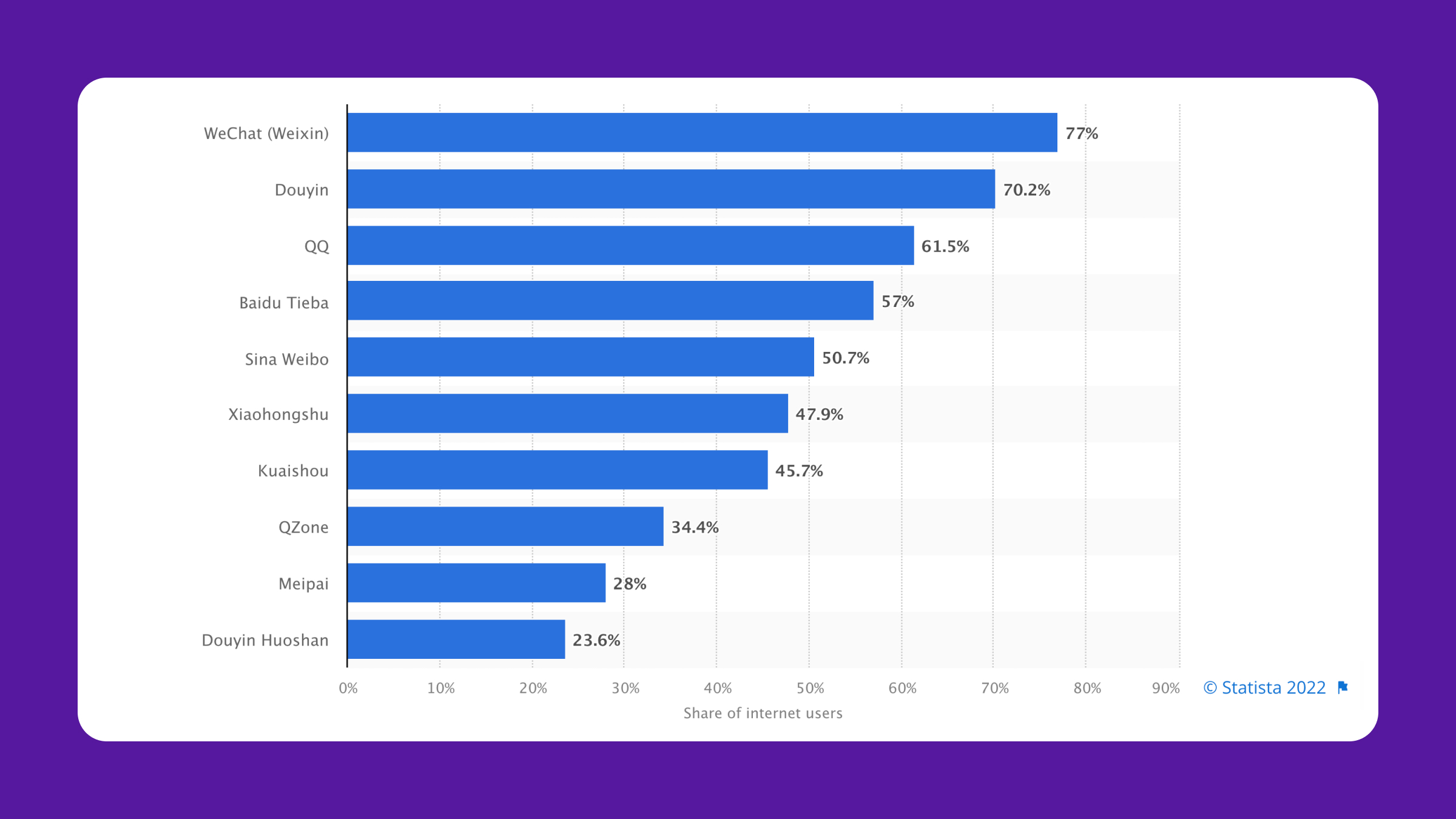An estimated 3.6 billion people were actively using social media worldwide in 2020, and the number is projected to rise to over 4 billion by 2025. Undoubtedly, social media marketing provides ample opportunity to reach a vast global audience.
However, the language barrier can get in the way of reaching your target audience on social media. With only about 19% of the world’s population speaking English as a first or second language, social media translation is something that brands shouldn’t overlook.
Content localization is an essential part of the translation process. Localization means adapting other elements (besides the words) into a more culturally resonant format. A simple example of localization is changing the homepage of a company’s foreign market site by replacing pictures of Americans with photos of locals. It can also involve other processes like changing currency options and formatting text right to left.
Proper localization practices improve the customer experience, making website visitors feel welcome and understood. You can achieve the same feeling with appropriate social media localization. In this post, we’ll walk you through eight best practices for social media localization and show you how to implement them in your business.
Our 8 Best Practices for Translating Your Social Media Content
If you’ve already decided to expand into a new market, it’s time to create a localization strategy. Your localization strategy is your plan for translating and localizing content for your target language. It should also encompass your strategy for social media localization.
As previously mentioned, localization is essential because it makes customers feel seen. It’s no wonder that 55% of global consumers would only purchase from websites if the product information is in their native language. This also applies on social media, which has quickly become a commerce hub.
If you want to appeal to global customers on social media, here are eight best practices to follow:
1. Choose the right platform to localize
To properly localize content for social media, you need to first know which social media platforms your audience uses and loves. Different countries favor one or two social media networks over others, while others don’t even use them at all. Translation can be a challenging and resource-demanding process. So, choosing the right social media platform ensures that you’re using your resources in a productive direction.
Not sure which platforms to invest in? Shae Vian, a digital marketing specialist at Learndojo suggests that “if you're creating content for youngsters, TikTok is great, but if you need to target a wider age range, you should try using Facebook. Need to target professionals? LinkedIn is better.”
Also consider which platforms are most effective in certain regions. For example, statistics show that Facebook is the most used social media platform in Europe. And in China, most people use platforms like WeChat and Douyin.
Share of Internet Users of the Leading Social Media in China (2021)

Source: Statista
2. Choose the right content to localize
Not all your content will work for all locales—that’s the whole principle of the localization process. Some posts simply won’t resonate with customers in foreign countries, just as some slangs and jokes won’t land well with them.
While choosing content to localize on social media, use content that is culturally relevant such as local holidays, seasonal items, news items, or relevant social issues. For example, here’s how Uniqlo USA and Uniqlo Australia’s Facebook pages compare. In the month of April, Australia is preparing for its winter season while in the US, it’s spring and summer preparation time.


Source: Uniqlo Australia & USA Facebook
3. Create social media pages for each audience
Some brands make the mistake of creating one social media page and posting in different languages, hoping to attract a variety of multilingual customers. Instead, create local social media pages for each country.
This means, for example, that you should have a separate Facebook page for your US audience, another for your Brazil audience, and then another for any other market you enter. And customize your content to resonate with your audience from different locales.
With specific pages and content curated for different markets, customers will be more likely to engage with your content and products.
4. Use geo-targeting and audience segmentation
Geo-targeting is the process of personalizing content based on customers approximate geographic location. This could be their country, state, zip code, or county, for example. With social media marketing, you can segment your audience based on their location and use that information to share hyper-personalized content.
Shae Vian suggests making “specific reference to something people of that local area will be able to recognize. For example, real estate agents may run Facebook ads with videos of them in a specific area as the backdrop encouraging people to sell via them due to high house prices in the area.” Vian says that “watch times and engagement levels increase with these videos as viewers want to see what's happening in their locality and have an invested interest in it.”

Source: McDonald’s India Instagram
In this ad on McDonald’s India’s Instagram, the team uses a familiar face — popular actor Chetan Dhawan — which fosters engagement in the comments section.
5. Consider working with influencers
Eight out of ten consumers report purchasing something because an influencer recommended it. (We know we’ve done it too.) So, who better to spread the word of your product or service to a new market than influencers? Influencers can be highly effective because people trust their recommendations—especially if they’re locals in your new market. Try running an influencer marketing campaign to get your products to more potential customers.
6. Work with skilled translators
Skilled translators hold the key to proper localization. Often, translators who live and work in your target market are native speakers too. They understand cultural nuances and know which jokes, idioms, or expressions will resonate with your audience. Smartling works with some of the best translators in the market to produce content that is accurate, adjusted for nuance, and enriched by industry knowledge.
7. Use a smart translation tool
Some translation software can be disappointing. It may produce translated text that is too long (and over those pesky character limits) or missing the witty tone the original text carried. To bypass these challenges, choose a smart translation tool.
Smartling’s translation software ticks all the boxes for translators and stakeholders alike. For example, our CAT tool offers a visual context feature that allows you to preview translations as they would look on your website or mobile app before translation is completed.
For stakeholders who need to keep up with the translation progress, Smartling’s translation management system is the perfect assistant. It alerts users to new content, allows you to assign content to translation workflows, upload resources and guiding texts, and monitors work progress among other things.
8. Analyze what’s working
With all the hard work you’ve put in, you need to monitor your social media analytics so you know which content is landing with your audience. Beyond likes and shares, comments, conversion rates, and link clicks are other metrics that may reflect significant engagement. As with all things in marketing, use your analytics to determine what’s worth maintaining and what you could tweak and improve.
Create the Best Localized Content for Social Media With Smartling
Localizing social media content is key to breaking into a new market. It involves more than directly translating text and reusing the same content for every locale. Rather, it demands in-depth audience research, collaboration with local translators and influencers, and using a highly efficient translation tool.
Smartling is the #1 translation and localization tool for web and social media content. In addition to robust translation software, we also work with top translators who are skilled at incorporating cultural nuances as they work.
Ready to create social content that resonates? Try Smartling and register for this year’s Global Ready event to help your business reach global audiences.








